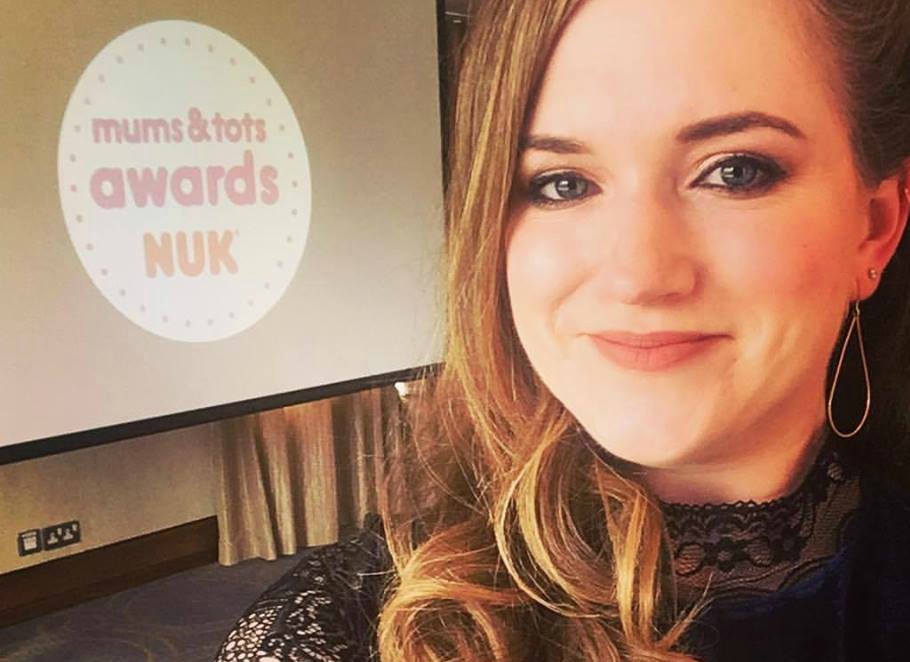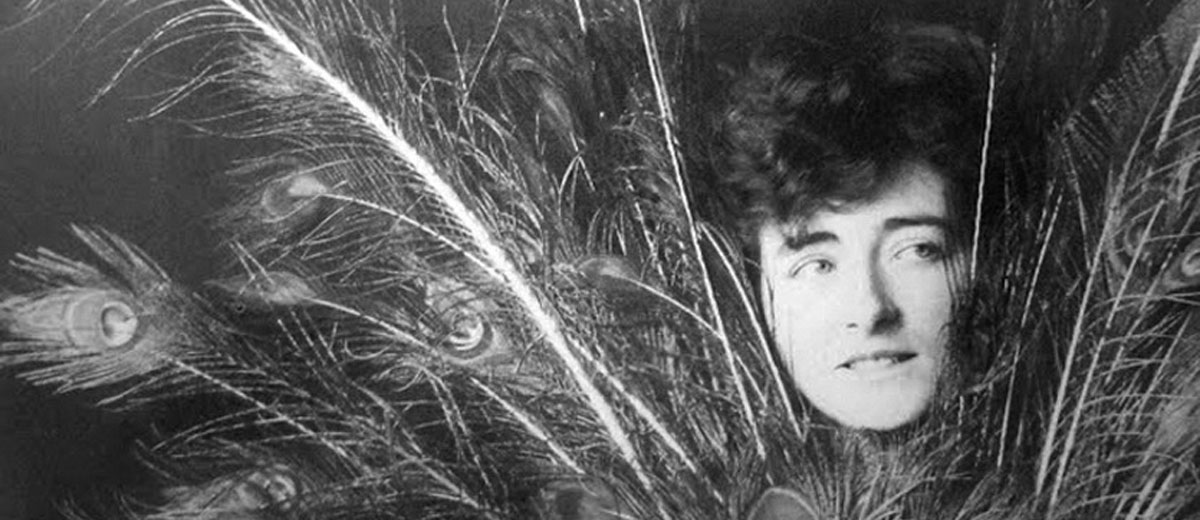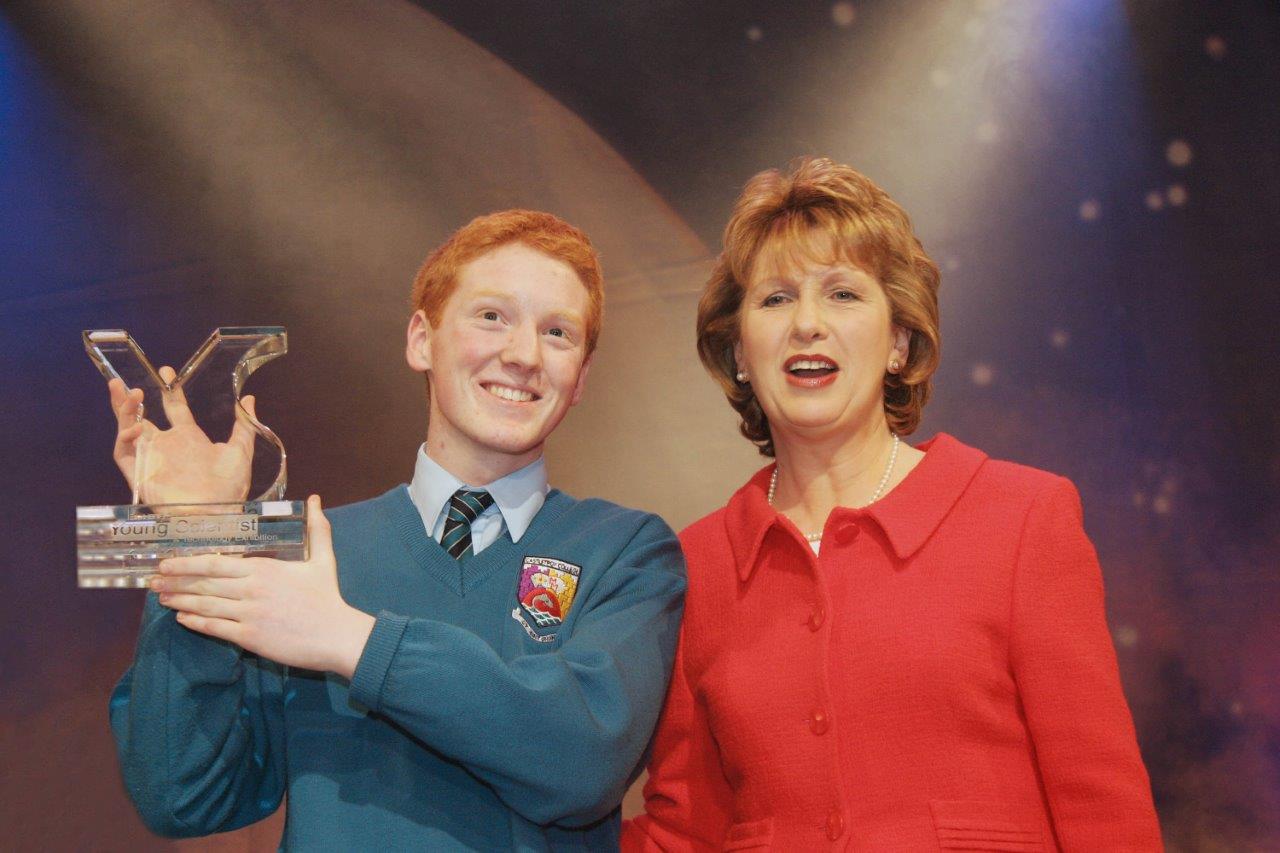Inventors, pioneers, warriors, adventurers, lifesavers, and legends. Here are 11 astonishing Irish women who blazed fiery trails.
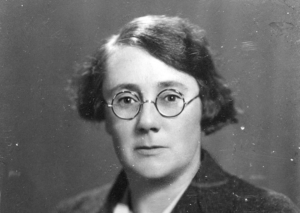
Rosie Hackett
Rosie Hackett was a veteran trade unionist who tirelessly campaigned to improve the lot of working women in Ireland. She was actively involved in Ireland’s fight for freedom through her membership of the Irish Citizens Army. A working-class Dubliner, Hackett played a prominent role in the infamous 1913 Lockout, mobilising the workers of Jacob’s biscuit factory in Dublin to strike in support of better conditions. She lost her job as a result but became a founder member of the Irish Women’s Worker’s Union soon after and campaigned vigorously on behalf of its 7,000 members at the movement’s height. She played a pivotal role as a clandestine messenger in the run-up to the 1916 Rising and most notably used her skills as a printer to urgently finish the Proclamation in time for it to be read by Pearse outside the GPO on Easter Sunday, 1916. Hackett maintained long afterwards that she handed the print to James Connolly with the ink still wet. After the Rising, she spent the rest of her life working in trade unionism and received a gold medal for her efforts from the trade union movement in 1970. Rosie Hackett’s broader contribution to Ireland was officially acknowledged in 2014 when Dublin’s newest bridge was named in her honour.
“Until the women of Ireland are free, the men will not achieve emancipation.”
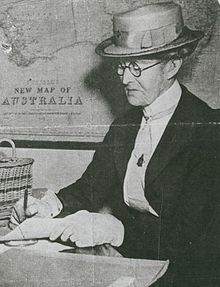
Daisy Bates
Originally from Tipperary, Daisy Bates, was a soi-disant anthropologist who is most famous for her empirical study of Aboriginal Australians, although her achievements remain the subject of sustained controversy. A journalist by profession, Bates was assigned by The Times in 1899 to investigate allegations of mistreatment of Aboriginals in north-west Australia, and it was on this mission that she had her first extended contact with them. She spent the remainder of her working life, over 40 years, visiting different settlements and documenting their lives, history, language, religion, culture and beliefs and wrote hundreds of articles about their plight, although her repeated assertions concerning Aboriginal cannibalism and the dangers of miscegenation aroused much controversy. In 1915 she set off for a stay of sixteen years at Ooldea, an Aboriginal settlement that was accessible by train to the travelling public, who could see her welfare work. Three visits by royalty to the site brought her fame, and she was awarded a CBE in 1934. However, despite her work and its longevity, Bates anthropological findings were either ignored or forgotten for decades and have only recently become the subject of renewed interest. She died in 1951.
“Heath’s astonishing achievement turned her overnight into one of the world’s most famous women.”
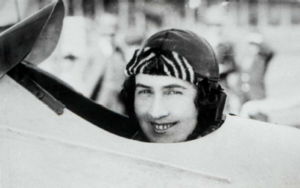
Lady Mary Heath
On May 17, 1929, a small open cockpit aeroplane landed at Croydon aerodrome in London. It had flown 9,000 miles from Cape Town, the first time anyone had ever flown solo over this distance, and its pilot was Limerick native, Sophie Peirce-Evans, aka Lady Mary Heath. Heath’s astonishing achievement, which took three months to complete, turned her overnight into one of the world’s most famous women almost and earned her the title of “Britain’s Lady Lindy” from the US press. Lady Heath’s life was a whirlwind of achievement from early on. Before her exploits in the air, she was an ambulance driver in WW1 and blazed a trail as an athlete, setting world records in javelin and high jump and representing the UK at both the Olympics and World Games. She even wrote a bestselling guide for aspiring athletes in 1925. She also became the first woman to hold a commercial flying licence in Britain and set several aviation records for altitude and was the first woman ever to parachute from an aeroplane (she landed in the middle of a football match). All of this before she turned 30. At the height of her fame, however, she suffered a serious injury at an air show in Cleveland, Ohio which ended her career and ultimately led to her early demise, aged only 42.
“We all owe an enormous debt to the spirit, determination and work of Dorothy Stopford Price.”
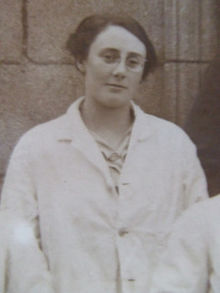
Dorothy Price
The people of Ireland owe a huge debt of gratitude to Dubliner, Dorothy Stopford Price, who is best known as the driving force behind the Government’s decision to introduce tuberculin testing and BCG vaccination in Ireland in 1948, a move which resulted in the ending of the Irish tuberculosis epidemic in the mid-20th century. A relentless campaigner on the issue, Doctor Price’s work is all the more impressive when considered in the context of the resistance she met at the time by both the medical community and the Catholic church authorities of the day as well as by the outbreak of WWII. She nonetheless persevered in her campaign to raise awareness and funds for the fight against TB and her hard work finally paid off in 1948 when the new Minister for Health, Dr Noel Browne, supported her case. Browne provided funding for Ireland’s first BCG unit to be opened in St Ultan’s Hospital, where Dorothy was based and appointed her as chair of the National Consultative Council on Tuberculosis.
“It wasn’t until years later that Kay and her colleagues received credit for their pioneering work.”
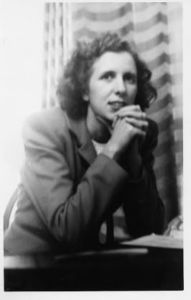
Kay McNulty Mauchly Antonelli
`If I had a dime for every computer in the world I sure would be a rich lady.’ The words of Donegal native, Kay McNulty Mauchly Antonelli, one of the original programmers of the first ever general-purpose electronic computer, ENIAC. A childhood Gaelic speaker, Kathleen McNulty emigrated to the US in 1924 and excelled in mathematics from an early age. She earned her degree in the subject in 1942 and went to work for the US Army as a “computer”, compiling tables that predicted the trajectories of various weaponry. When the war had ended, she, along with five other female mathematicians, became programmers of the pioneering ENIAC computer and made substantial contributions to computer science by converting complicated mathematical equations into single operations that the computer could perform in sequence. The contribution of the programmers was not acknowledged when the ENIAC was unveiled to the public, however, and it wasn’t until years later that Kay and her colleagues received credit for their pioneering work. Throughout her life, she continued to work with her husband, John Mauchly, on the software side of his hardware designs.
“She transformed the magazine from an ailing wannabe into the most influential fashion publication of its era.”
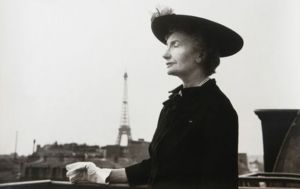
Carmel Snow
A little-known fact is that the most influential person in the world of high fashion was once an Irish woman, and as editor-in-chief of Harper’s Bazaar from the 1930s to the 1950s, Dubliner, Carmel Snow, was that person. Snow began her career as a fashion editor at Vogue and so impressed its owner, Condé Nast, that he personally nurtured her talents and refined her for greater things within his organisation. Snow, however, had other ideas and jumped ship at the age of 39 to join a bitter rival, Hearst, as editor of its flagship Harper’s Bazaar magazine. Nast saw the move as treacherous and left him apoplectic with a lifelong rage.

In her new role, however, Snow had the freedom she craved to implement her ideas, and these were the components that transformed the magazine from an ailing wannabe into the most influential fashion publication of its era, catering not only for the well-dressed woman but the “well-dressed mind”. Key among Snow’s many talents was her gift for spotting great writers, artists and photographers and such luminaries as Diana Vreeland, Truman Capote, Cecil Beaton, Andy Warhol, Henri Cartier-Bresson, Jean Cocteau Man Ray, Martin Munkacsi, Henri Cartier-Bresson and Richard Avedon all contributed to Harper’s stunning success. Harper’s owner William Randolph Hearst always viewed Snow as a loose cannon, once writing a famous memo: “Does anyone have any control over Mrs Snow? I know I don’t.”
“What started out as a fledgeling indigenous industry had transformed into a global behemoth to rival that of Paris, London and New York.”
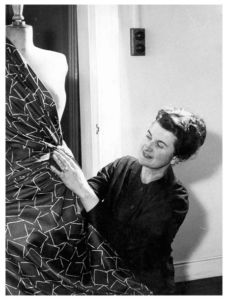
Neillí Mulcahy
Neillí Mulcahy was an innovative fashion designer and a central figure in the creation and development of Ireland’s fashion industry in the 1950s and 60s, now considered to have been its Golden Age. Along with couturiers Ib Jorgensen, Irene Gilbert, Sybil Connolly, Clodagh Kennedy and others, Mulcahy was pivotal in creating an indigenous fashion industry here to cater exclusively to the needs of the domestic market. However, when President Sean T. O’Kelly’s wife, Mary, wore all Neillí Mulcahy designs on a presidential visit to the US in 1959, the American fashion press took note. Very soon, what started out as a fledgeling indigenous industry had transformed into a global behemoth to rival that of Paris, London and New York. Ireland’s success was short-lived however as mass-produced clothing selling at significantly lower prices all but erased the demand for haute couture and by the mid 1970s the dynamics of the global fashion market had irrevocably changed.
“They also founded Cuala Industries in 1909, the only arts and crafts press to be run and staffed exclusively by women.”
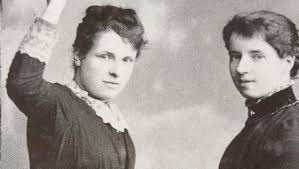
Lily and Lolly Yeats
The achievements and exploits of the Butler Yeats brothers, William and Jack, have been well documented over the years but less is known about the lives of their talented sisters, Susan ‘Lily’ and Elizabeth ‘Lolly’ Yeats. The sisters were also heavily involved in the arts, Lily as an embroiderer and Lolly as a printer. They later joined forces as entrepreneurs with the foundation (along with Evelyn Gleeson) of, first, the Dun Emer craft studio in Dundrum which focused on embroidery, printing, and tapestry-making and later, of Cuala Industries, the only arts and crafts press to be run and staffed exclusively by women which opened in 1909. Cuala was also the only press that solely published new work rather than established classics and its catalogue included works by, amongst other, Ezra Pound, Elizabeth Bowen, Oliver St John Gogarty, Louis McNiece, Frank O’Connor and Yeats himself. While the business was a success, the private lives of the two were less so, with Lolly falsely accused of madness by her family and confined to bed in her later years, and Lily – who reportedly disliked her sister intensely – being forced to live with her until death. The Cuala Industries continued trading after both sisters died but closed for good in 1969.
“Her participation led to her arrest and imprisonment and cost her her job as a teacher.”
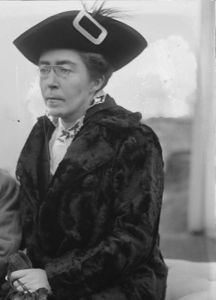
Hanna Sheehy-Skeffington
Hanna Sheehy-Skeffington was one of Ireland’s earliest and most ardent exponents of women’s rights and Irish independence. She was a co-founder of the Irish Women’s Franchise League in 1908, a militant suffrage organisation that played a huge role in the struggle for equality and was a founding member of the Irish Women’s Workers Union. A talented writer, she established the Irish Citizen newspaper with her husband and used it to, amongst other things, publicise her firmly held views on equality issues. Sheehy-Skeffington didn’t restrict her activities to print, however, and famously took part in a public protest over the decision to deny women the right to vote on the third Home Rule Bill in 1912. The protest saw demonstrators throw rocks at Dublin Castle’s windows in a symbolic act aimed at ending male rule in Ireland. Her participation in that protest led to her arrest and imprisonment and cost her her job as a teacher. Sheehy-Skeffington was an enlightened advocate for the cause of women’s rights in Ireland; her core belief was simple: “Until the women of Ireland are free, the men will not achieve emancipation.”
“At first, she and her colleagues thought the signal might be coming from an intelligent alien civilisation.”
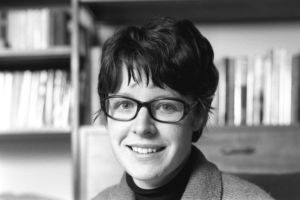
Jocelyn Bell Burnell
For a small island like Ireland, we boast an extravagant number of scientists who have gained notability in the field of mathematics, physics and astronomy throughout history. A current torchbearer in this area is the astrophysicist and Armagh native, Jocelyn Bell Burnell, who is best known for her discovery of pulsating radio stars, or pulsars, a finding that was described by the BBC as “one of the most significant scientific achievements of the 20th Century”. As a Cambridge University post-graduate student in July 1967, Bell Burnell detected a “bit of scruff tracking across the sky with the stars” and noted that the signal was pulsing with great regularity. At first, she and her colleagues thought the signal might be coming from an intelligent alien civilisation – a little green man – but on closer inspection, she established that what she saw was a family of objects that had never been seen before. Her discovery was awarded the Nobel Prize in 1974. However, the award was not accredited to Bell Burnell, but to her supervisor at Cambridge, Anthony Hewish, and to the astronomer Martin Ryle, while she was overlooked. Many observers have since attributed the snub to her gender, but Bell Burnell herself has pointed out on many occasions that scientific prizes don’t normally go to graduate students, and that the committee did not know that she was a woman and thus she has never contested the decision.
“George Bernard Shaw once described her as the greatest living Irishwoman.”
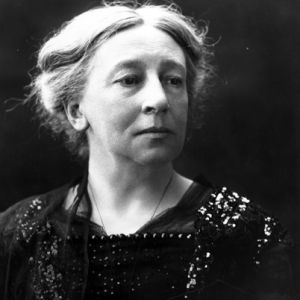
Lady Augusta Gregory
Often viewed as a background player, overshadowed by the charisma and celebrity of WB Yeats, J.M. Synge, Sean O’Casey and other more flamboyant Irish literary figures, Lady Augusta Gregory was nonetheless a key catalyst for Ireland’s ‘Celtic Revival’, the fin de siècle cultural renaissance described by the literary critic, Pascale Casanova, as one of the greatest literary revolutions in history. It was Gregory’s stewardship (along with Yeats and Edward Martyn) and dedication to this cause that led to the creation of the Irish Literary Theatre, which, in conjunction with the Fay brother’s Irish National Dramatic Society, ultimately led to the foundation of the National Theatre of Ireland – The Abbey Theatre – in 1904 and which Gregory then ran. Her guardianship of the theatre in its difficult early years was pivotal to both its survival and its future prosperity. Gregory was a talented writer in her own right who began writing plays after helping Yeats with his early dramas, and much of her provides a rich source of information on the Irish life during the first three decades of the 20th century.
Playwright George Bernard Shaw once described her as “the greatest living Irishwoman”. Despite her pivotal role in the revolution, however, interest in her work waned after her death in 1932, and subsequent arguments about her exact role in the foundation of the national theatre did pay an unwarranted disservice to her legacy.
Article by Shay Bagnall.

